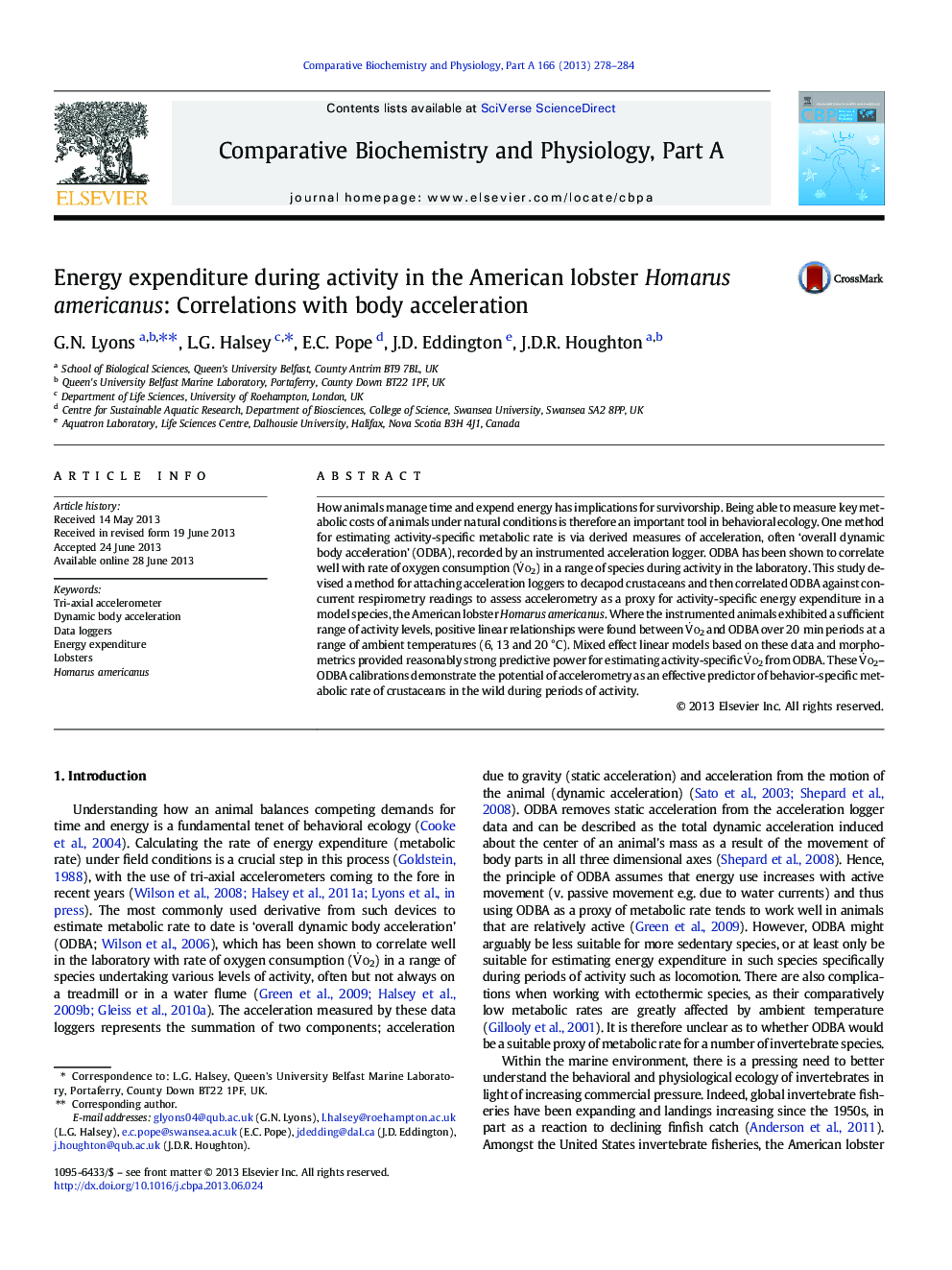| Article ID | Journal | Published Year | Pages | File Type |
|---|---|---|---|---|
| 10818813 | Comparative Biochemistry and Physiology Part A: Molecular & Integrative Physiology | 2013 | 7 Pages |
Abstract
How animals manage time and expend energy has implications for survivorship. Being able to measure key metabolic costs of animals under natural conditions is therefore an important tool in behavioral ecology. One method for estimating activity-specific metabolic rate is via derived measures of acceleration, often 'overall dynamic body acceleration' (ODBA), recorded by an instrumented acceleration logger. ODBA has been shown to correlate well with rate of oxygen consumption (VËo2) in a range of species during activity in the laboratory. This study devised a method for attaching acceleration loggers to decapod crustaceans and then correlated ODBA against concurrent respirometry readings to assess accelerometry as a proxy for activity-specific energy expenditure in a model species, the American lobster Homarus americanus. Where the instrumented animals exhibited a sufficient range of activity levels, positive linear relationships were found between VËo2 and ODBA over 20 min periods at a range of ambient temperatures (6, 13 and 20 °C). Mixed effect linear models based on these data and morphometrics provided reasonably strong predictive power for estimating activity-specific VËo2 from ODBA. These VËo2-ODBA calibrations demonstrate the potential of accelerometry as an effective predictor of behavior-specific metabolic rate of crustaceans in the wild during periods of activity.
Related Topics
Life Sciences
Biochemistry, Genetics and Molecular Biology
Biochemistry
Authors
G.N. Lyons, L.G. Halsey, E.C. Pope, J.D. Eddington, J.D.R. Houghton,
